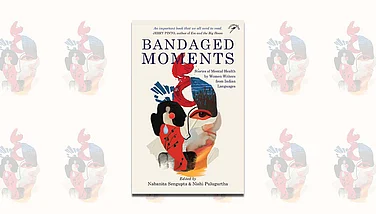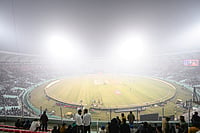In Phansijhora, a computerised town of 2050 AD, a couple live together, delinked from a fulfilling social life, interacting through cyberspace, travelling in hoverbuses and hoverbeans, visiting teleschools inside the house,making love when there is parking space for leisure. The duo are Malvik Beriya, married thrice but confident that "everybody didn't keep track of all his marriages", and Neenia, his 11-year-old daughter. In an intrepid twist to the tale, the young Neenia poses an appallingly succinct query: "Daddy won't you make love to me, like last night?"
Naked admission of incest but, in Basu's scheme of things, the situation falls into place. What was a Moravian act of desecration today could be a run-of-the-mill veracity tomorrow, his unstated insistence resonates throughout the plot. Sequestered not just for a evanescent phase, their interdependence is such that they are stripped of alternatives apart from seeking refuge in each other, physically or otherwise. Incest justifies itself, just like Neenia's use of sting rays to immobilise an intruder or her father's expenditure of more than one thousand rupees to buy antiquated candles, matchboxes and root wafers which are neither 'food-grade' nor 'vacuum-packed'.
The tale's other fragment is lodged in the mid-'60s. The protagonist of this phase is Kasturi Tarangini, a young princess and an eternal drifter who has witnessed the torment generated by the Naxalite movement. And, it is while talking of this revolution—and particularly its accidental offshoots—that Basu crafts his ideas really well. He talks of small-town revolutionaries, ideologically motivated nefarious acts, texts of leaflets, and the atmosphere within the rooms of comrades with the familiarity of a serious student of the momentous turbulent era.
Describing the experience of a comradeon a package tour of 'people's China', he writes: "The vestibule that led from the reception to the guest room was blocked with bamboo scaffolding, broken furniture, open crates of rotting files, uprooted commodes...and the assorted debris of social transition caught in haste." Subtle and pungent as he employs such descriptive devices for a critical evaluation of the movement, what is enamouring is the manner in which he never allows a perspective to overpower the basic function of creative literature.
Through the lives of Tarangini and Neenia, exploring two diverse time zones in Phansijhora and Arambari, he focuses on the narrative's basic theme. That is "Rio Abajo Rio", the Mexican phrase for a river beneath the river, which implies a heightened level of consciousness which doesn't bring everything within the parameters of human comprehension. Why does Neenia go abroad? Why does Tarangini become what she does? The queries remain unanswered though the link between diverse strands is thought-provoking: while society might change, and bubble-dumpers replace the rickety Chevrolets, human beings remain immutable. And often, incorrigible.


























